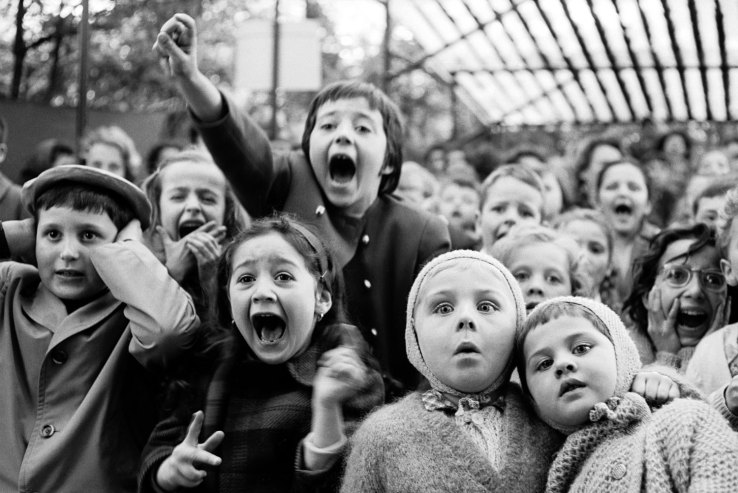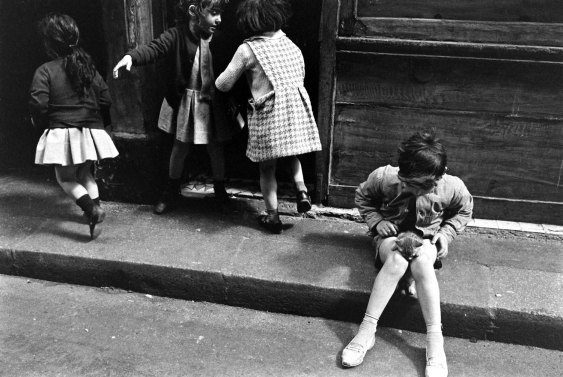The Camera and The Environment
This post is about documentation and specifically photography. We use photographic documentation for both the children's portfolios and for teacher-reflection. That said, what changes does the camera bring to the conversation of play once introduced into the environment? When I was studying for my first degree (Radio, Television, and Film) we thought, talked, and wrote about how the camera's presence subtly and sometimes even profoundly influences the environment it seeks to capture. In documentary films like the Maysels' Salesman, 1968 and The Burks of Georgia, 1974 or Barbara Kopple's Harlan County USA, 1976, the viewer must wonder...how did the presence of the camera change the unfolding of these people's lives? Simply put, the camera changes it.
This question is also considered in still photography. Lucien Aigner, Erich Salomen, Alfred Eisenstaedt, Robert Frank, and Robert Capa all used small format cameras to document their subjects. And these cameras were quite revolutionary for the time. Robert Frank confidently captured moments private and profound on the wide angle offered via his Leica by simply clicking in the direction of his subjects often not even looking through the view finder. These photographers shunned the physically large cameras, big lenses, and tripods available for something that would not be noticed by their subjects.
Consider the forever and always delicious photo by Alfred Eisenstaedt, Children at a Puppet Theater Paris 1963. The children are one with the play, St. George and the Dragon. Their emotions and facial expressions are soaring and flying with the action. Only one is looking directly at the camera. Yet she too, is part of the drama, her sister pulling her close and therefore this little one is able to have the luxury of looking away from the puppet battle.
At nursery school, my subjects are children in their natural element and even though my Canon Powershot ELPH is about the size of a Leica, the children definitely know I have it in my hand because they will sometimes ask me to take a photo of something they have built or organized to "save it" they tell me. They will also retrieve it for me when I set it down. They know it so well. We need these photos to record what they are doing and therefore what they are learning. These photos also reveal patterns of play. We use these for reflection, as teachers. We can see which children are playing together, what kinds of play they most often engage in, what materials they use and how they use these. So most of the photos do not land in the children's portfolios, but are a valuable piece of their story.
This photograph, Paris Street Scene 1963, also by Eisenstadt gets us closer to documenting play patterns...
All this considered, I am so aware of the presence of the camera and try very hard to remove it from the conversation. My little Powershot ELPH, is digital with automatic focus and has a large view screen, a viewfinder is not even an option nor is it necessary. In fact, I do not need to look at the view screen! I aim, sometimes at hip level, holding the shutter halfway to focus on the middle ground and clicking through. I also use the same camera to collect HD videos in much the same way. I hold the camera to the side and film away. Outside, I find myself standing behind bushes and trees now that they have grown in so well or behind doors and block structures inside.
Some of these photos are collected on our facebook page and our flickr page, both accessible here. The videos are available for viewing on our TPCNS youtube channel. If you watch the videos you can see that the children will often look at the camera because I -- and my camera -- have been standing still too long, or they want to ask me a question. So these videos may be of interest, from a documenting play perspective, they also must be viewed knowing that the camera is very much present in the environment.


